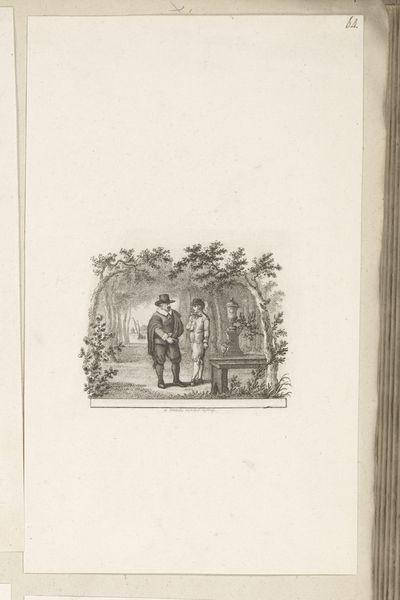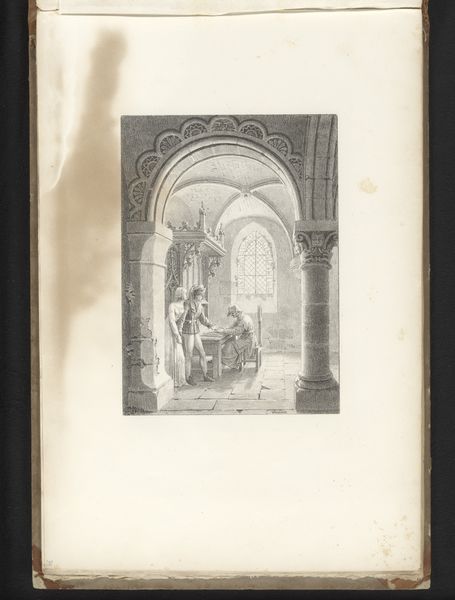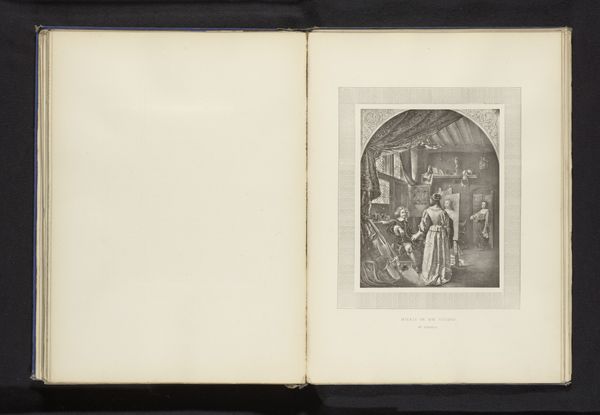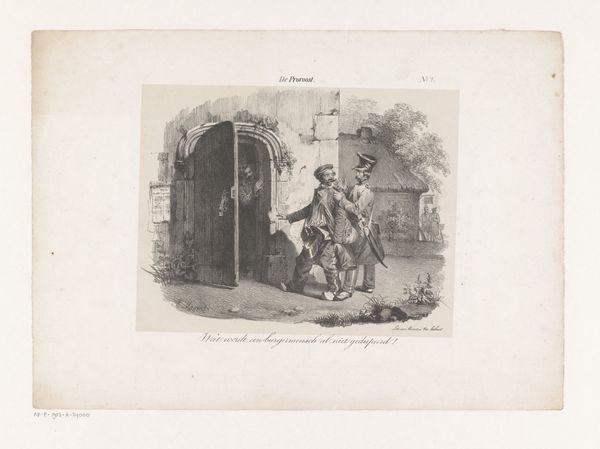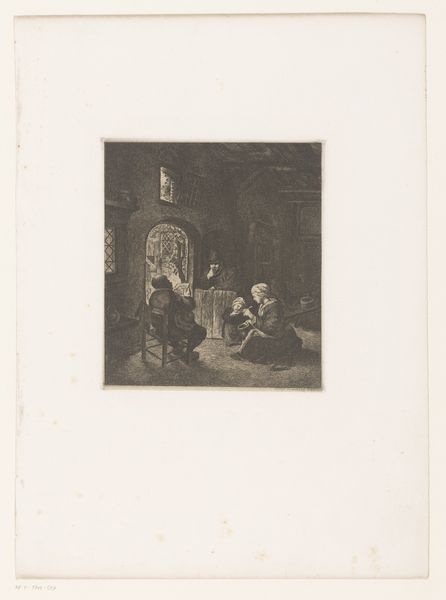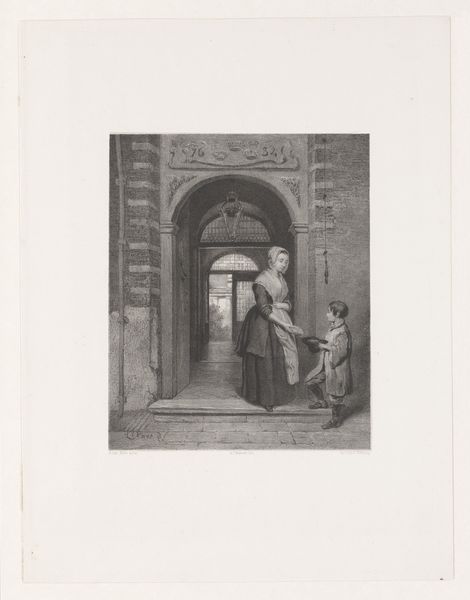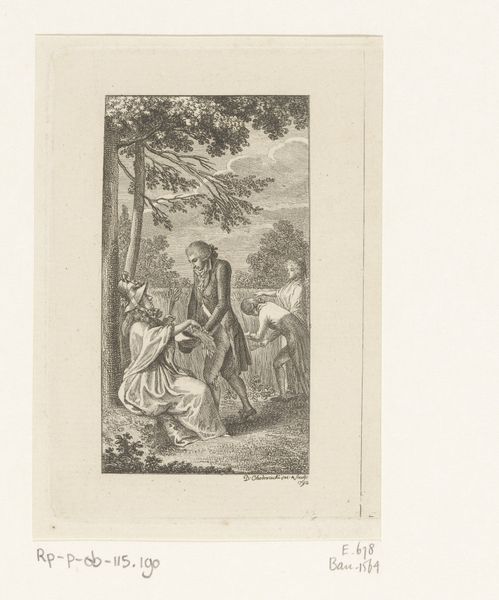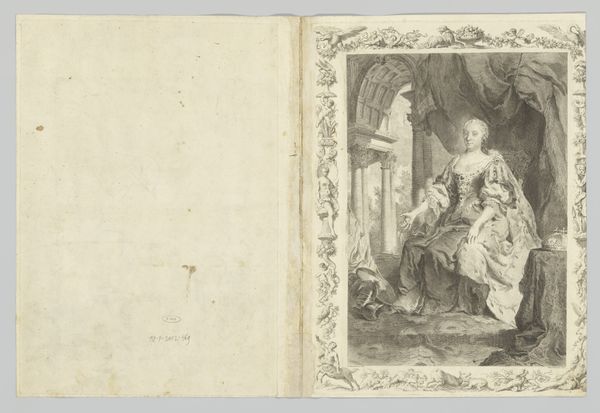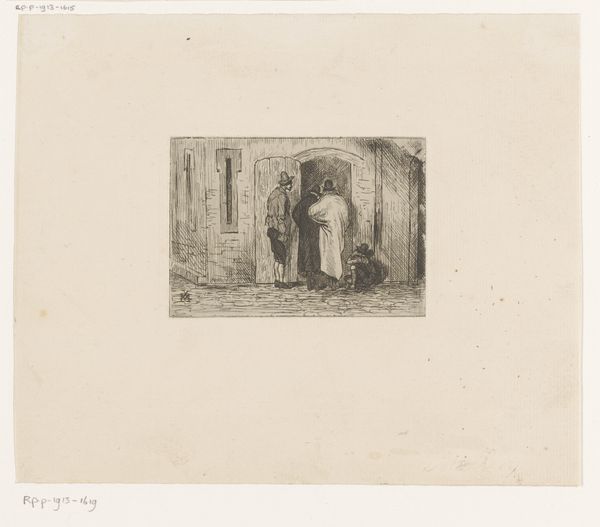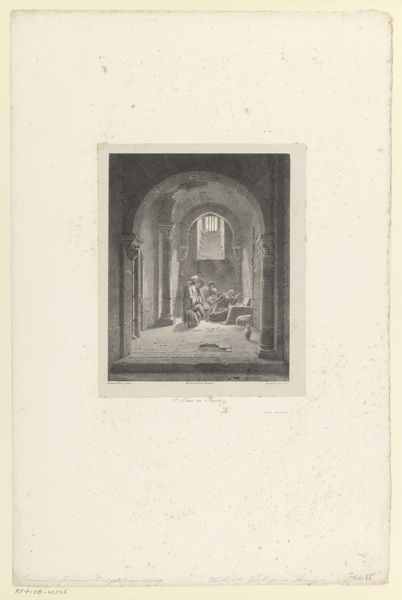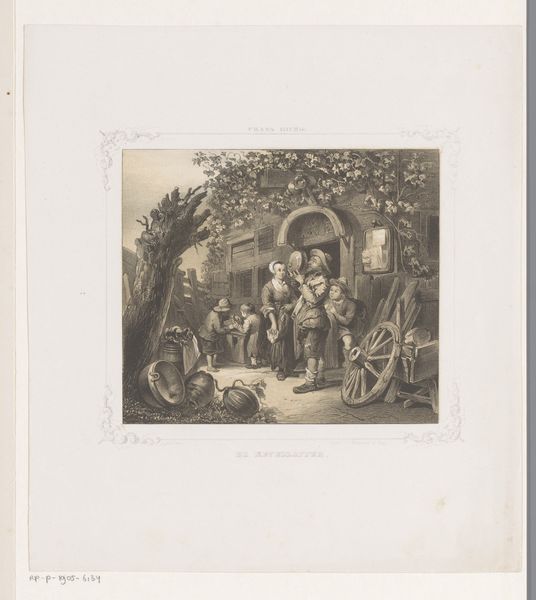
print, engraving
#
narrative-art
# print
#
figuration
#
romanticism
#
genre-painting
#
engraving
Dimensions: height 356 mm, width 271 mm
Copyright: Rijks Museum: Open Domain
Curator: This print, dating from the first half of the 19th century, roughly between 1822 and 1845, is called “Meisje bij poort.” It’s the work of Johannes Christiaan d'Arnaud Gerkens, an engraver who embraced the Romantic movement. What catches your eye first? Editor: It's like a glimpse into a fairy tale! A very contained, rather domestic fairy tale. The scene feels both intimate and somehow laden with untold stories. There’s something melancholic about it, isn’t there? The way the light catches her… Curator: I think so, yes. Romanticism often blends beauty with a touch of sorrow. Observe the image above the door - possibly the house's owner. His solemn countenance, combined with the young girl about to knock, create an ambiance of hesitant expectation. The entire entryway is covered in ivy. Editor: The dog is an important piece to this narrative! We all know dogs are symbols for loyalty... I'm interested in his pose. He’s seated, patient. What do you think? Waiting for a command or just attuned to the girl's mission, maybe even complicit? The composition almost positions him as a gatekeeper, reflecting her uncertainty or purpose. Curator: An excellent reading, indeed. Animals often play a symbolic role; dogs, especially, represent fidelity and watchfulness. Here, he mirrors the girl's position: both are hopeful and slightly reserved, waiting for entry and permission, into this hidden sanctum. Editor: It feels like she’s petitioning to be let into some secret inner world, both physical and maybe… metaphorical. It is striking how ordinary objects like doorways can contain emotional and social significance. How domesticity can evoke emotions about isolation, exclusion. Curator: That's precisely it. The charm of genre painting is this: small narratives hinting at larger themes. While d'Arnaud Gerkens may not be among the most famous Romantic artists, in “Meisje bij poort”, he distilled the aesthetic values into an almost dreamlike narrative. Editor: Absolutely, there's so much embedded in what seems like such a simple, charming tableau! These Romantic-era artworks offer enduring appeal, resonating through their exquisite attention to both detail and symbolism. It encourages one to linger and find stories hidden just beneath the surface of familiarity. Curator: A fitting end. As always, these quiet narratives hold immense potency!
Comments
No comments
Be the first to comment and join the conversation on the ultimate creative platform.
